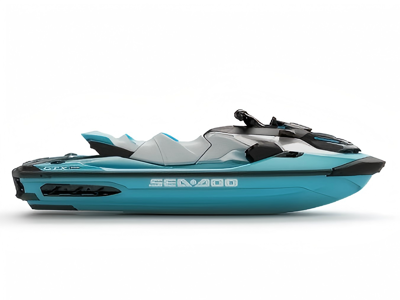
Информационный центр

Морские насосы играют критически важную роль в различных отраслях, от судостроения до оффшорной добычи нефти. Их долговечность напрямую влияет на безопасность, эффективность и экономику эксплуатации. В этой статье мы подробно рассмотрим технологии, которые обеспечивают долговечность морских насосов, и почему они так важны для современной морской индустрии.
Введение в долговечность морских насосов
Долговечность морского насоса определяется его способностью выдерживать суровые условия морской среды, включая высокую соленость, коррозию, абразивные частицы и экстремальные температуры. Это не просто вопрос надежности, а ключевой фактор для минимизации простоев и затрат на обслуживание. Современные технологии позволяют создавать насосы, которые служат десятилетиями, благодаря инновациям в материалах, конструкциях и системах управления.
Например, в судоходной отрасли насосы используются для перекачки балластных вод, охлаждения двигателей и борьбы с пожарами. Их отказ может привести к катастрофическим последствиям, таким как затопление судна или потеря груза. Поэтому инвестиции в долговечные технологии оправданы не только с экономической, но и с экологической точки зрения, снижая риски разливов нефти и других загрязнений.
В этой статье мы углубимся в детали, начиная с выбора материалов, которые сопротивляются коррозии, и заканчивая умными системами, которые предсказывают и предотвращают поломки. Мы также обсудим реальные примеры из практики, чтобы показать, как эти технологии работают в действии.
Ключевые материалы для устойчивости к коррозии
Одной из основных угроз для морских насосов является коррозия, вызванная соленой водой. Традиционные материалы, такие как углеродистая сталь, быстро разрушаются в таких условиях. Поэтому инженеры обратились к более стойким сплавам, таким как нержавеющая сталь марки 316, которая содержит молибден для усиления сопротивления хлоридам.
Более продвинутые варианты включают дуплексные и супердуплексные нержавеющие стали, которые обладают высокой прочностью и коррозионной стойкостью. Эти материалы часто используются в критических приложениях, например, в насосах для перекачки морской воды на нефтяных платформах, где даже малейшая утечка может привести к серьезным авариям.
Кроме металлов, широко применяются композитные материалы, такие как стеклопластик или углеродное волокно. Они легче, не подвержены коррозии и могут быть спроектированы для конкретных условий. Например, насосы из композитов идеальны для применений с высокой абразивностью, так как они менее склонны к износу.
Важным аспектом является также покрытие поверхностей. Технологии like thermal spray или galvanization добавляют защитные слои, которые продлевают жизнь насоса. Исследования показывают, что proper material selection can increase pump lifespan by up to 50% compared to standard options.
Инновационные конструкции для снижения износа
Конструкция насоса играет не менее важную роль в его долговечности. Современные насосы проектируются с учетом гидродинамики, чтобы минимизировать кавитацию и вибрацию, которые являются основными причинами износа. Кавитация возникает, когда в жидкости образуются пузырьки пара, которые схлопываются с большой силой, повреждая внутренние компоненты.
Чтобы combat this, engineers use computational fluid dynamics (CFD) to optimize impeller and volute designs. This results in smoother flow paths that reduce turbulence and erosion. For instance, centrifugal pumps with specially shaped impellers can handle abrasive particles without significant damage.
Another key innovation is the use of magnetic couplings or canned motors in sealless pumps. These designs eliminate mechanical seals, which are prone to leakage and failure in marine environments. By using magnetic forces to transfer torque, these pumps avoid direct contact between moving parts, drastically reducing wear and maintenance needs.
Modular designs are also becoming popular, allowing for easy replacement of worn components without dismantling the entire pump. This not only extends the overall lifespan but also reduces downtime during repairs. Case studies from the shipping industry show that modular pumps can last over 20 years with proper maintenance.
Умные технологии и мониторинг
В эпоху Industry 4.0, умные технологии revolutionize pump durability. Sensors embedded in pumps monitor parameters like temperature, pressure, vibration, and flow rate in real-time. This data is transmitted to control systems that use algorithms to predict failures before they occur.
For example, predictive maintenance systems can alert operators to unusual vibrations indicating bearing wear, allowing for scheduled repairs instead of emergency shutdowns. This not only prevents catastrophic failures but also optimizes energy usage, as pumps can be adjusted to operate at peak efficiency.
Internet of Things (IoT) integration enables remote monitoring and control, which is crucial for offshore applications where access is limited. Pump manufacturers now offer cloud-based platforms that provide analytics and recommendations for maintenance, further enhancing longevity.
Additionally, automation technologies, such as variable frequency drives (VFDs), allow pumps to adapt to changing conditions without overloading. This reduces mechanical stress and extends component life. In one real-world application, a marine pump equipped with VFDs showed a 30% increase in lifespan compared to fixed-speed models.
Экологические и экономические преимущества
Долговечность морских насосов напрямую contributes to sustainability. Longer-lasting pumps mean less frequent replacements, reducing waste and resource consumption. This aligns with global efforts to minimize environmental impact, especially in sensitive marine ecosystems.
From an economic perspective, investing in durable technologies lowers total cost of ownership. Although initial costs might be higher for advanced materials and smart systems, the savings from reduced maintenance, energy efficiency, and avoided downtime quickly outweigh the investment. For instance, a study by a major pump manufacturer found that durable pumps can save up to 40% in lifecycle costs over 10 years.
Moreover, regulatory bodies are increasingly demanding higher standards for marine equipment. Technologies that enhance durability help companies comply with regulations such as the International Maritime Organization (IMO) guidelines, avoiding fines and enhancing corporate reputation.
In conclusion, the durability of marine pumps is achieved through a combination of material science, innovative design, and smart technologies. By embracing these advancements, industries can ensure reliable, efficient, and sustainable operations for years to come.
Заключение
В целом, технологии, делающие морской насос долговечным, multifaceted и continuously evolving. From corrosion-resistant materials to intelligent monitoring systems, each innovation plays a vital role in extending pump life. As marine environments become more challenging, the adoption of these technologies will be crucial for future-proofing infrastructure and promoting safety and efficiency.
We encourage readers to consider these factors when selecting or maintaining marine pumps, and to stay informed about the latest advancements in the field. For more information, consult with experts or refer to industry publications.
